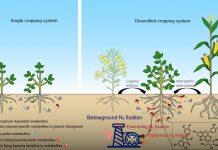Feng ZZ Pang J Kobayashi K et al.. Differential responses in two varieties of winter wheat to elevated ozone concentration under fully open-air field conditions. Global Change Biology 2011 17(1): 580-591. (IF 6.346 环境科学,一区)
Abstract
Two modern cultivars [Yangmai16 (Y16) and Yangfumai 2 (Y2)] of winter wheat (Triticum aestivum L.) with almost identical phenology were investigated to determine the impacts of elevated ozone concentration (E-O(3)) on physiological characters related to photosynthesis under fully open-air field conditions in China. The plants were exposed from the initiation of tillering to final harvest with E-O(3) of 127% of the ambient ozone concentration (A-O(3)). Measurements of pigments gas exchange rates chlorophyll a fluorescence and lipid oxidation were made in three replicated plots throughout flag leaf development. In cultivar Y2 E-O(3) significantly accelerated leaf senescence as indicated by increased lipid oxidation as well as faster declines in pigment amounts and photosynthetic rates. The lower photosynthetic rates were mainly due to nonstomatal factors e.g. lower maximum carboxylation capacity electron transport rates and light energy distribution. In cultivar Y16 by contrast the effects of E-O(3) were observed only at the very last stage of flag leaf ageing. Since the two cultivars had almost identical phenology and very similar leaf stomatal conductance before senescence the greater impacts of E-O(3) on cultivars Y2 than Y16 cannot be explained by differential ozone uptake. Our findings will be useful for scientists to select O(3)-tolerant wheat cultivars against the rising surface [O(3)] in East and South Asia.







